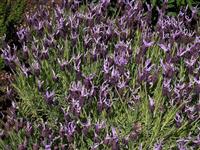How to Grow and Use Scented Plants - A course for:
- Landscape Designers and Contractors
- Trade Gardeners
- Horticulturists and plant lovers wishing to extend their plant knowledge
- Herb farmers interested in exploring a wider scope of scented plants
- Those setting up sensory gardens
Learn to identify, grow (propagation and culture), and use different types of scented plants. You will find out how to harvest and dry scented plants, and through practical assignments actually make a whole range of exciting herb crafts (e.g. pot pourri, soaps, candles). Learn also how to landscape a scented garden and expand your knowledge of dozens of different scented plant species.